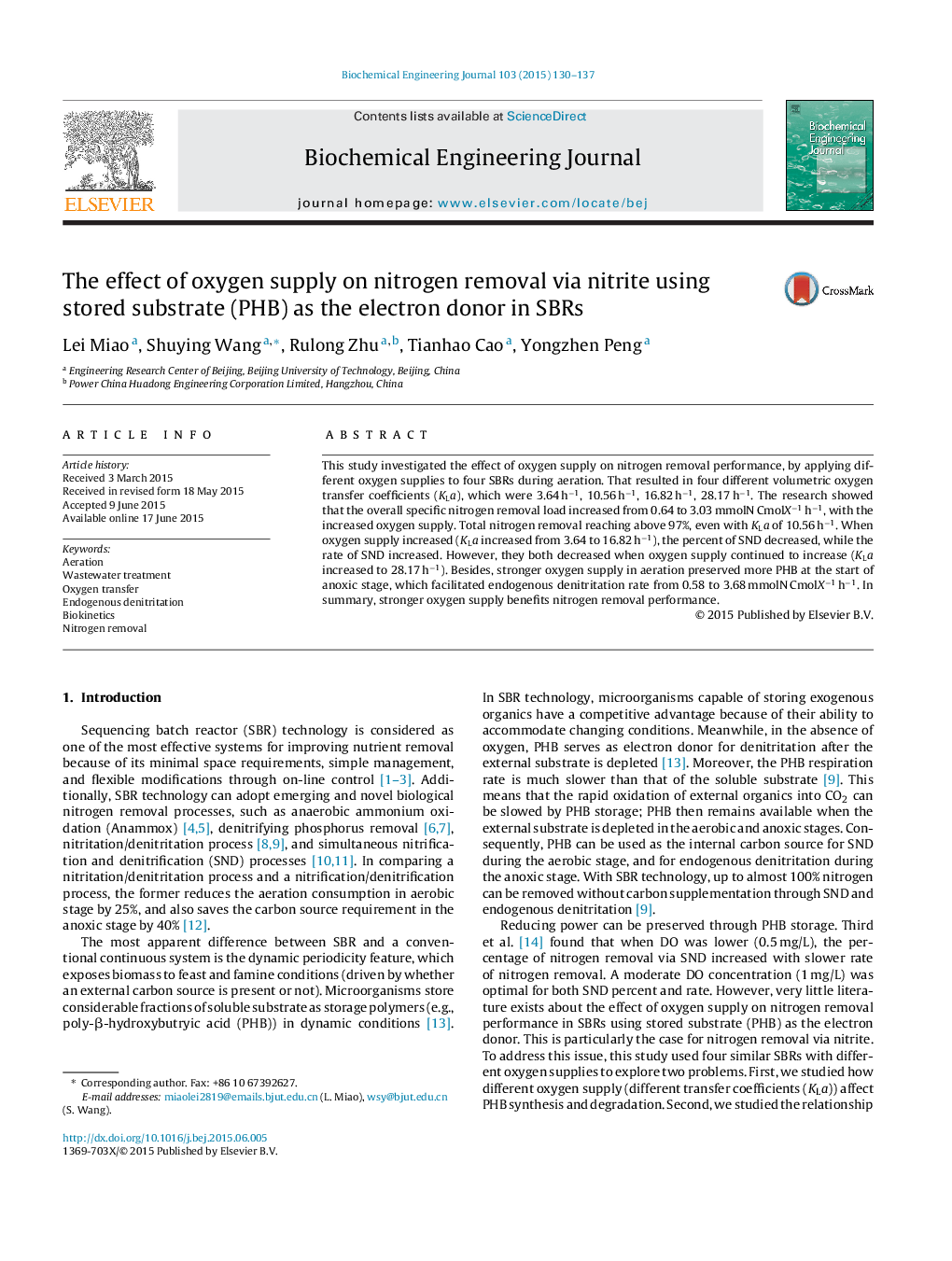| Article ID | Journal | Published Year | Pages | File Type |
|---|---|---|---|---|
| 6484030 | Biochemical Engineering Journal | 2015 | 8 Pages |
Abstract
This study investigated the effect of oxygen supply on nitrogen removal performance, by applying different oxygen supplies to four SBRs during aeration. That resulted in four different volumetric oxygen transfer coefficients (KLa), which were 3.64Â hâ1, 10.56Â hâ1, 16.82Â hâ1, 28.17Â hâ1. The research showed that the overall specific nitrogen removal load increased from 0.64 to 3.03Â mmolNÂ CmolXâ1Â hâ1, with the increased oxygen supply. Total nitrogen removal reaching above 97%, even with KLa of 10.56Â hâ1. When oxygen supply increased (KLa increased from 3.64 to 16.82Â hâ1), the percent of SND decreased, while the rate of SND increased. However, they both decreased when oxygen supply continued to increase (KLa increased to 28.17Â hâ1). Besides, stronger oxygen supply in aeration preserved more PHB at the start of anoxic stage, which facilitated endogenous denitritation rate from 0.58 to 3.68Â mmolNÂ CmolXâ1Â hâ1. In summary, stronger oxygen supply benefits nitrogen removal performance.
Related Topics
Physical Sciences and Engineering
Chemical Engineering
Bioengineering
Authors
Lei Miao, Shuying Wang, Rulong Zhu, Tianhao Cao, Yongzhen Peng,
